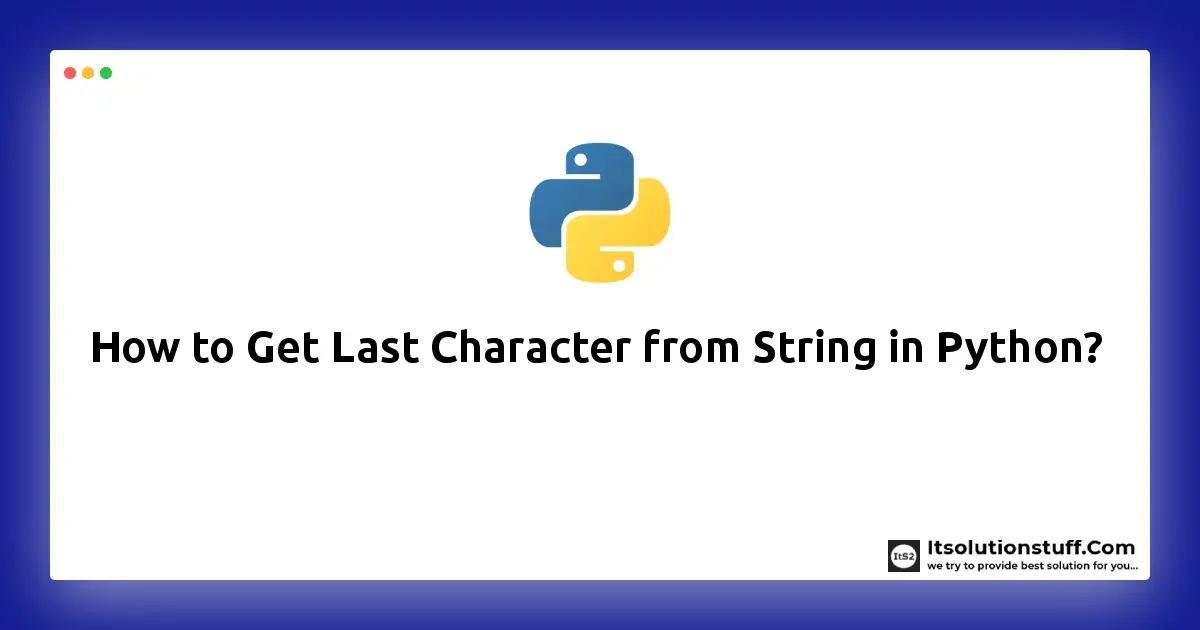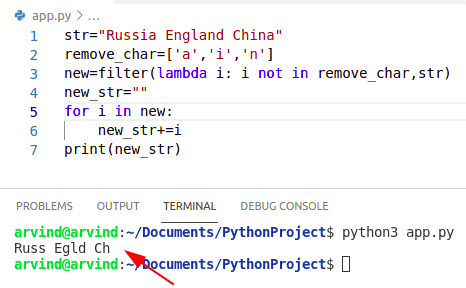Strip Away: Last Character String Removal in Python

Welcome to this comprehensive guide on the Strip Away technique in Python, a powerful method for manipulating and refining strings. The Strip Away approach is an essential tool for developers, offering a simple yet effective way to remove the last character from a string, a common requirement in various programming scenarios. This guide will delve into the concept, its applications, and provide practical examples to enhance your Python skills.
Understanding the Strip Away Technique

The Strip Away technique in Python is a method to remove the last character of a string. It’s a fundamental operation in string manipulation, often used to clean up or format data. While it may seem like a minor operation, its applications are far-reaching and crucial for many programming tasks.
In Python, strings are sequences of characters, and each character is accessed by its index. The Strip Away technique involves accessing the last character of a string using its index and then removing it. This can be achieved in several ways, depending on the specific requirements and the context of the string manipulation task.
Practical Example
Consider the following scenario: you have a string representing a filename, and you want to remove the file extension to extract the base name. The Strip Away technique is perfect for this, as it allows you to remove the last few characters (the file extension) from the string.
# Example of Strip Away technique to remove file extension
filename = "document.txt"
base_name = filename[:-1] # Remove the last character
print(base_name) # Output: "document.t"
In this example, the [:-1] syntax is used to access all characters in the string except the last one. This is a concise and efficient way to achieve the Strip Away operation.
Advanced Strip Away Techniques

While the basic Strip Away technique is straightforward, there are more advanced methods to achieve the same result, offering flexibility and adaptability to different scenarios.
Using String Methods
Python’s string methods provide a more intuitive way to perform the Strip Away operation. The rstrip method, for instance, can be used to remove characters from the right end of a string, effectively stripping away the last character(s) based on a given condition.
# Example of using the rstrip method for Strip Away
filename = "document.txt"
base_name = filename.rstrip("txt") # Remove the last characters "txt"
print(base_name) # Output: "document."
In this example, the rstrip method is used to remove the last characters "txt" from the filename. This method is particularly useful when you want to remove a specific set of characters from the end of the string.
Regular Expressions for Complex Strip Away
For more complex string manipulation tasks, regular expressions can be a powerful tool. Regular expressions, often referred to as regex, provide a flexible and expressive way to identify and manipulate patterns in strings.
import re
# Example of using regular expressions for Strip Away
filename = "document.txt"
base_name = re.sub(r"\.txt$", "", filename) # Remove the last characters ".txt"
print(base_name) # Output: "document"
In this example, the re.sub function is used to replace a pattern matched by the regular expression r"\.txt$" with an empty string, effectively removing the file extension from the filename. Regular expressions can handle more intricate string manipulation tasks and are an invaluable tool for developers.
Performance Analysis and Considerations
When it comes to performance, the Strip Away technique in Python is generally efficient and fast. The [:-1] syntax, for instance, provides a concise and quick way to remove the last character from a string. However, it’s important to consider the specific context and requirements of your application.
For simple string manipulation tasks, the basic Strip Away methods are often sufficient and perform well. However, for more complex tasks or when dealing with large amounts of data, using regular expressions or other advanced techniques may require more computational resources.
It's always a good practice to profile your code and measure its performance, especially when dealing with large datasets or time-sensitive applications. This ensures that your chosen Strip Away technique is optimal for your specific use case.
Real-World Applications
The Strip Away technique has numerous real-world applications across various domains. Here are a few examples:
- Data Cleaning: In data processing, removing unwanted characters from the end of strings, such as trailing spaces or punctuation, is a common task. The Strip Away technique is perfect for this, ensuring clean and consistent data.
- File Handling: As demonstrated in the examples above, the Strip Away technique is invaluable for handling filenames, especially when extracting base names or removing file extensions.
- Text Processing: In natural language processing and text analysis, removing punctuation or special characters from the end of sentences or phrases is a common requirement. The Strip Away technique can be tailored to handle such tasks efficiently.
Future Implications and Best Practices

The Strip Away technique, while seemingly simple, is a powerful tool in a developer’s arsenal. As Python continues to evolve and new libraries and tools emerge, the Strip Away technique will likely remain a fundamental concept in string manipulation.
When working with strings in Python, it's essential to understand the various methods and techniques available for manipulation. This includes not only the basic Strip Away technique but also the more advanced methods using string methods and regular expressions. By familiarizing yourself with these techniques, you can choose the most appropriate method for your specific use case, ensuring efficient and effective code.
In conclusion, the Strip Away technique in Python is a valuable skill for any developer. Its simplicity and versatility make it a go-to method for string manipulation, offering a range of applications from basic data cleaning to complex text processing. As you continue your Python journey, mastering the Strip Away technique will undoubtedly enhance your programming skills and make your code more efficient and readable.
Can the Strip Away technique be used to remove multiple characters from the end of a string?
+Absolutely! The Strip Away technique can be adapted to remove any number of characters from the end of a string. For instance, filename[:-4] would remove the last four characters from the string. This makes it a versatile tool for various string manipulation tasks.
Are there any performance considerations when using the Strip Away technique on large strings or datasets?
+While the Strip Away technique is generally efficient, it’s important to consider performance when dealing with large strings or datasets. In such cases, more optimized methods like regular expressions or specialized string manipulation libraries might be more suitable. Profiling and benchmarking your code can help determine the most efficient approach.
Can the Strip Away technique be used to remove characters from the beginning of a string as well?
+Yes, Python provides similar techniques for removing characters from the beginning of a string. The lstrip method, for instance, can be used to remove characters from the left side of a string. This, combined with the Strip Away technique, offers a comprehensive solution for string manipulation.



